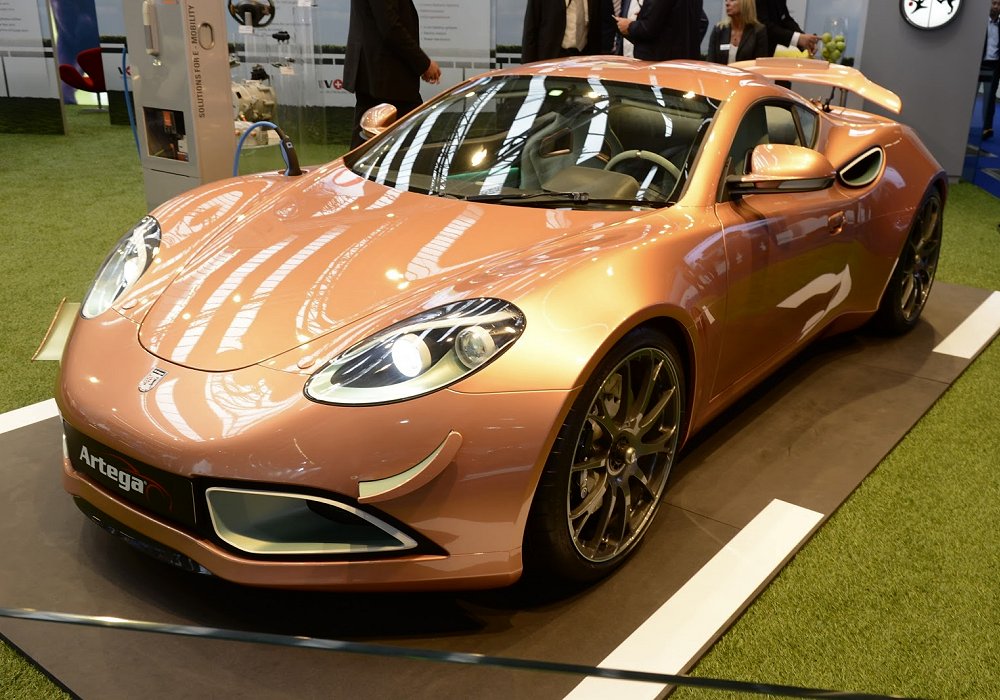The automotive world stood still at the 2015 Frankfurt Motor Show when Artega unveiled their electric masterpiece. The Scalo emerged as a statement of intent, showcasing how traditional sports car manufacturers could embrace the electric future without compromising on performance or character. It represented more than just a new model — it marked the resurgence of a brand determined to challenge the established order.
The timing couldn’t have been more perfect. As major manufacturers were still hesitating at the crossroads of electric mobility, Artega boldly stepped forward with a vision that would influence the industry for years to come. The Scalo wasn’t just another electric vehicle; it was a testament to the possibilities that lay ahead.
The Power Revolution
The heart of the Scalo tells a compelling story of innovation. Twin electric motors, each capable of delivering 195 kW of pure electric thrust, work in harmony to create an exhilarating driving experience. Some variants even featured a quad-motor setup, pushing the boundaries of what was thought possible in electric performance vehicles.
“The Scalo’s powertrain architecture represented a paradigm shift in how we think about electric sports cars,” notes Dr. Marcus Weber, former powertrain development lead at BMW. “Its dual-motor setup wasn’t just about raw power — it was about intelligent power delivery and weight distribution.”
The 37 kWh battery pack might seem modest by today’s standards, but it was a marvel of engineering efficiency in 2015. Delivering up to 250 miles of range, it struck a perfect balance between performance and practicality. The 10-hour charging time reflected the technology of its era, but the focus was clear — this was a car built for enthusiasts who understood the trade-offs between performance and convenience.
Fact!
The Scalo's power delivery system was so advanced that it influenced the development of several modern electric sports cars. Its innovative motor placement and power distribution became a blueprint for future performance EVs.
Engineering Excellence
The Scalo’s development team faced a unique challenge: creating a vehicle that could match the character of Artega’s beloved GT while embracing an electric future. The result was a masterclass in engineering innovation, where every component was optimized for both performance and efficiency.
- precise weight distribution through strategic battery placement;
- advanced thermal management systems for consistent performance;
- regenerative braking calibrated for both efficiency and driving feel;
- aerodynamic design elements that reduced drag while maintaining stability;
- innovative chassis design incorporating lightweight materials.
Each element was carefully considered and tested, resulting in a vehicle that could deliver sustained performance without compromise.
Important!
The Scalo achieved a remarkable feat in maintaining a perfect 50:50 weight distribution despite its battery pack, something that many modern electric sports cars still struggle to achieve.
Visual Drama
Artega’s designers understood that an electric sports car needed to make a statement without shouting. The Scalo’s exterior design speaks a language of purposeful elegance, where every curve and contour serves both aesthetic and aerodynamic functions.
“What impressed me most about the Scalo was how it maintained Artega’s design DNA while establishing its own unique identity,” remarks Sarah Chen, automotive design consultant. “It managed to look both timeless and forward-thinking — a rare achievement in automotive design.”
The interior continues this theme of focused luxury. Every surface, switch, and display was positioned with driver engagement in mind. The cockpit creates an environment that connects the driver to the vehicle’s advanced technology while maintaining the intimate feel expected of a high-performance sports car.
Performance Redefined
The Scalo didn’t just match contemporary performance standards — it redefined them. With instant torque delivery and sophisticated power management, it demonstrated how electric powertrains could enhance rather than compromise the sports car experience.
Track testing revealed capabilities that surprised even the most skeptical critics. The combination of electric torque and advanced chassis dynamics resulted in cornering abilities that rivaled established sports cars. More importantly, the Scalo could deliver this performance consistently, thanks to its advanced thermal management system.
Notice!
The Scalo's acceleration from 0-60 mph was not just quick — it was repeatable. Unlike many early electric performance cars, it could maintain its performance levels even after multiple high-speed runs.
Looking Forward
The Artega Scalo remains a pivotal moment in the evolution of electric sports cars. Its approach to performance, design, and engineering laid groundwork that continues to influence modern electric vehicle development.
As we witness the current revolution in electric mobility, the Scalo’s significance becomes even clearer. It showed that electric vehicles could deliver not just performance, but character — a crucial insight that helped pave the way for today’s electric sports cars.
Pros & Cons
| Advantages | Disadvantages |
|---|---|
| Revolutionary dual/quad motor system providing exceptional performance | 10-hour charging time limited daily usability |
| Advanced weight distribution enhancing handling characteristics | Limited production numbers affecting parts availability |
| Impressive 250-mile range for its era | Battery technology now outdated by modern standards |
| Pioneering aerodynamic design that influenced future EVs | High initial cost limited market accessibility |
| Superior build quality and materials | Limited service network compared to mainstream manufacturers |
| Innovative thermal management system | Charging infrastructure was less developed in 2015 |
| Ground-breaking power delivery system | Complex electrical architecture requiring specialized maintenance |
The Artega Scalo represents a crucial stepping stone in the evolution of electric sports cars. While it may have been ahead of its time in some respects, its influence on modern electric vehicle development is undeniable. The challenges it faced and overcame helped pave the way for the current generation of electric performance vehicles, making it a significant piece of automotive history.

